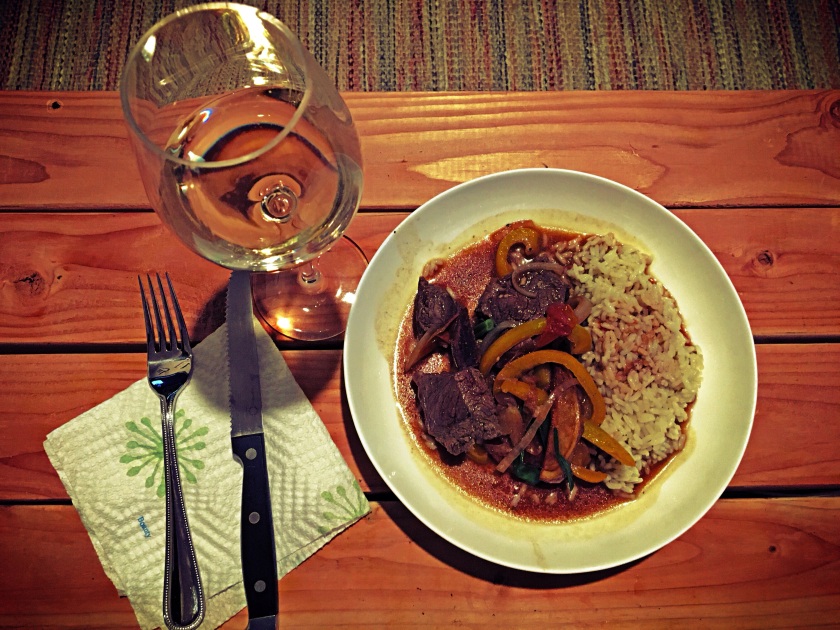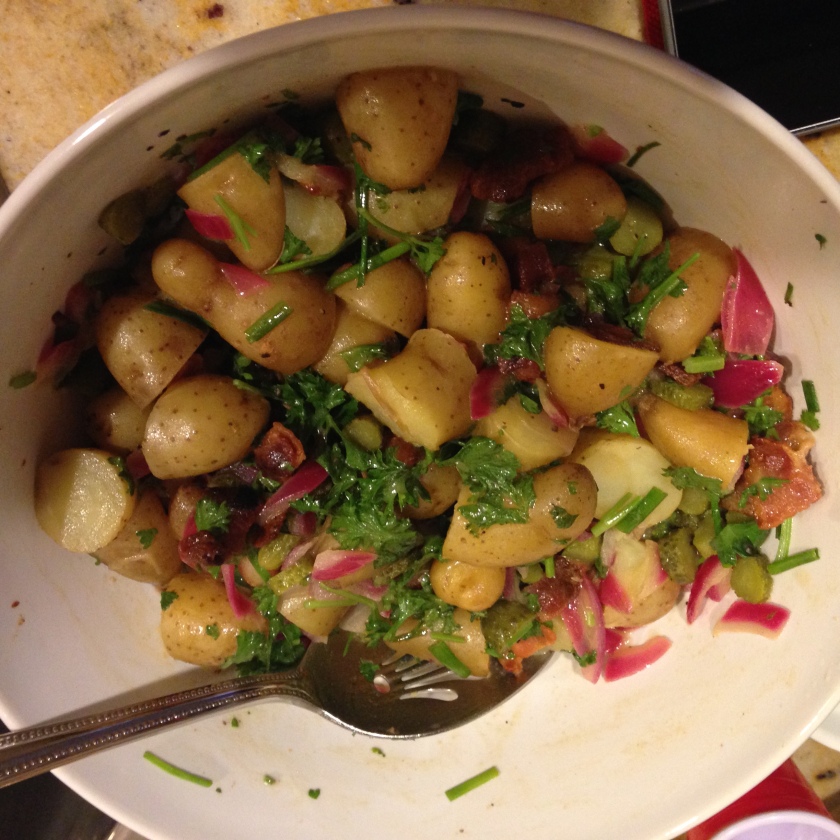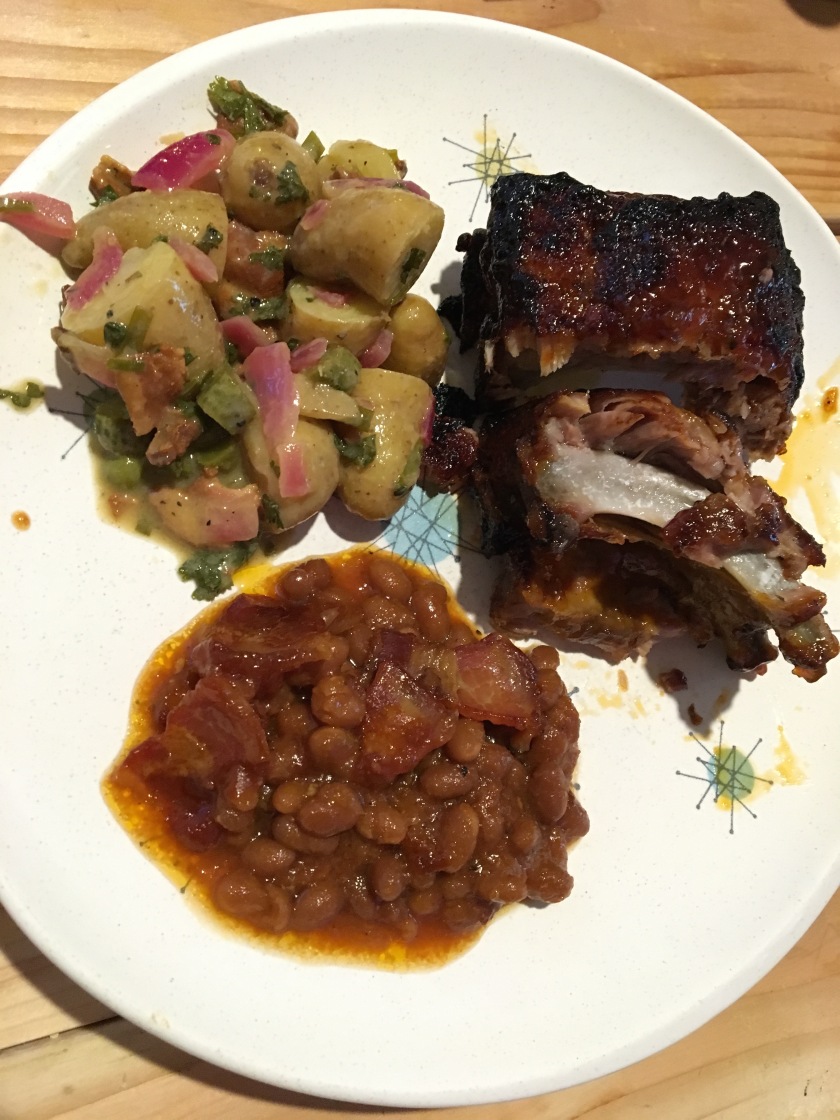
There are things about Miami that never occurred to me that I would miss. One of these is Peruvian food. I never really had it that often, but when I did, it was really good!
I came across this recipe by Gaston Acurio. Mr. Acurio is one of Peru’s most famous chefs and owns a number of restaurants across Latin America, Europe and the US.
Lomo saltado closely resembles a stir fry with beef, peppers, potatoes, onions and tomatoes. The finished product has a really flavorful sauce that gets absorbed by the potatoes and rice and gives them this wonderful salty and acidic taste. It’s even better the next day!
I followed the recipe as instructed. I think next time I might add some fresh grated ginger with the garlic. The linked recipe is in Spanish. See below for my translation. Enjoy!
Lomo Saltado de Gaston Acurio:
600gr beef loin, cubed
1/2 cup olive oil
2 medium onions in thick slices
2 yellow bell peppers in thin slices
4 tomatoes in thick, quartered slices
1 tbsp minced garlic or garlic paste
1/4 cup soy sauce
4 tbsp white wine vinegar
1/2 cup beef broth
1/2 cup green onion, chopped
1 tbsp chopped culantro leaves
Salt and Pepper to taste
For the fried potatoes:
1/2 lb yellow potatoes
vegetable oil
Slice the potatoes into french fry shape.
In a large pan, heat the oil and fry the potatoes until lightly browned and crunchy.
Remove from the oil with tongs or a slotted spoon and drain on paper towels. Set aside.
Season the beef with salt and pepper. Heat the oil in a wok over high heat. Add the beef and cook until brown on all sides.
Add the onions, tomatoes and peppers. Stir and cook for about 40 seconds.
Add the garlic, soy, vinegar and broth. Stir and cook for about 30 seconds and add the potatoes. Check for seasoning.
Stir in the green onions and culantro leaves.
Serve with white rice.
Notes:
I used tri-tip sirloin which is more inexpensive than the tenderloin.
I did not have culantro leaves so I seasoned the beef with ground coriander in addition to the salt and pepper.
I used a combination of yellow, red and purple potatoes to add more color.

Buen Provecho!







